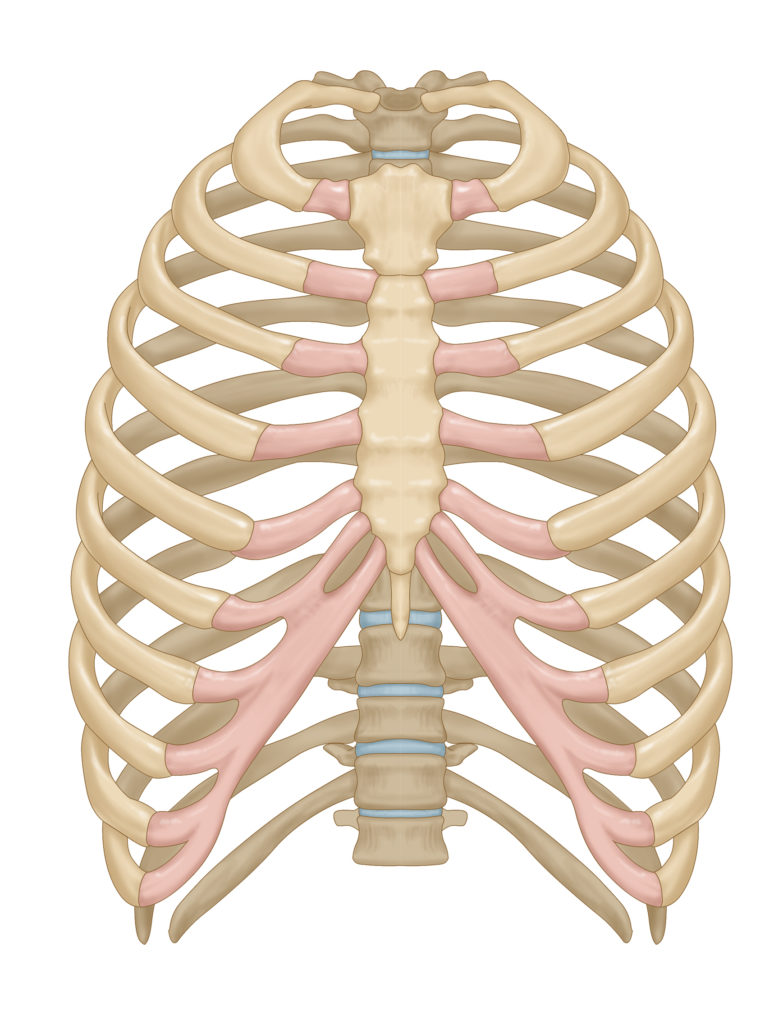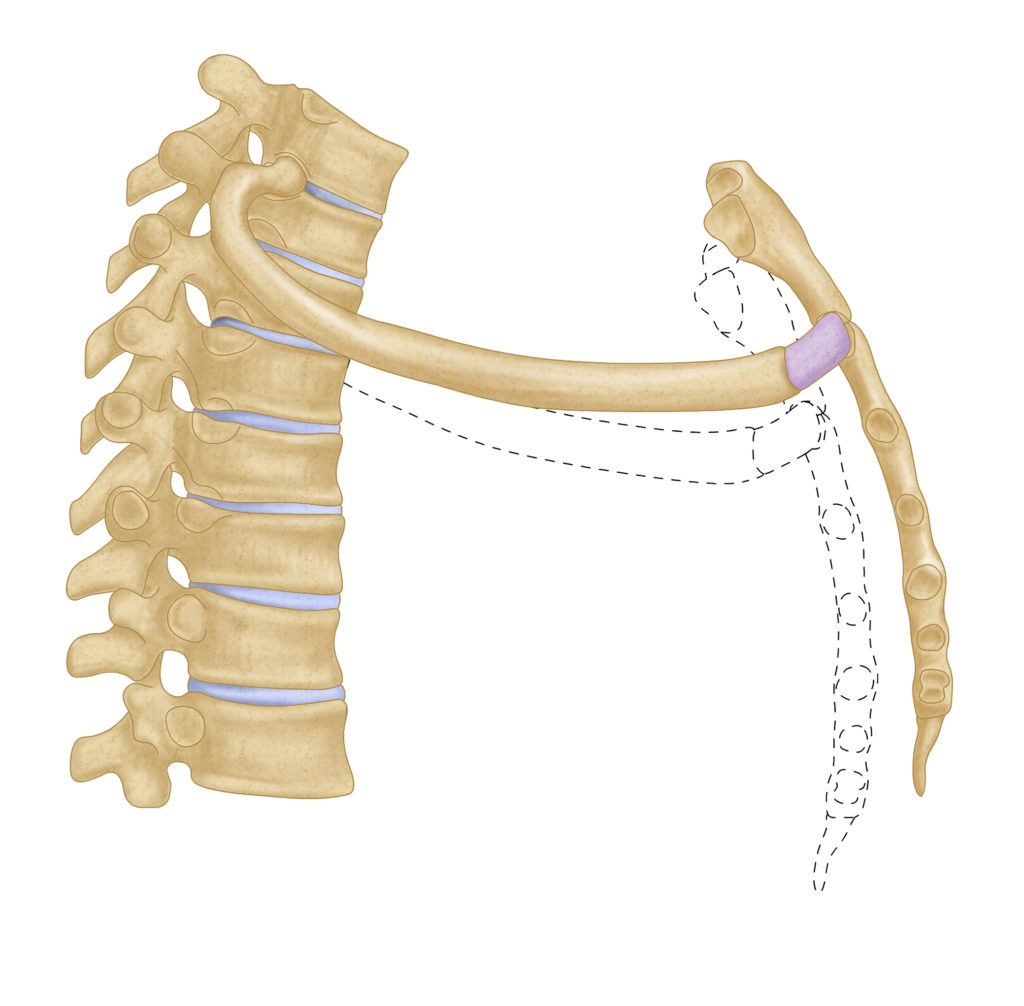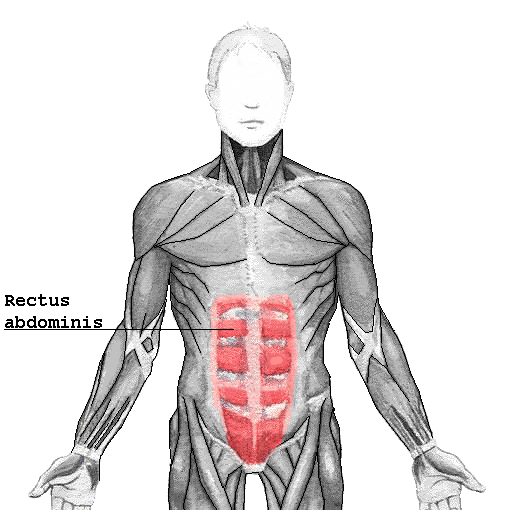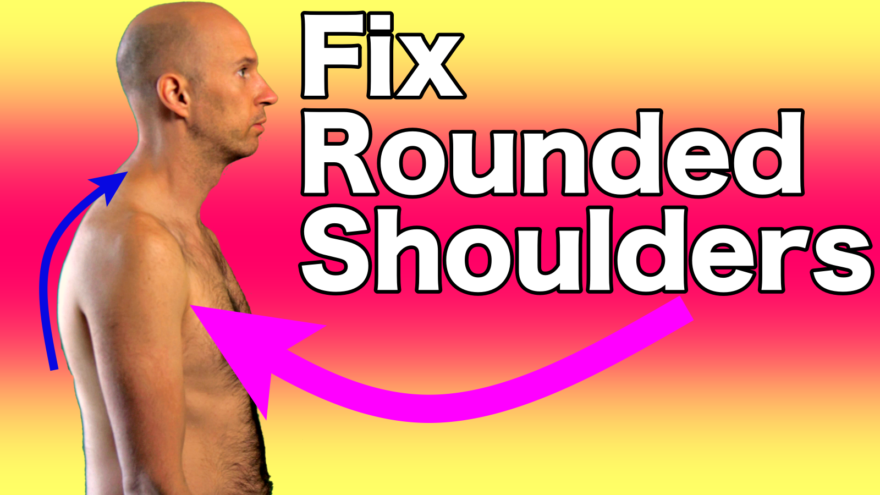Table of Contents
Having rounded shoulders doesn’t occur for the reason you think it does
Rounded shoulders are an often common complaint of folks who perceivably have poor posture.
Conventional rehab makes us think that the simple solution to this problem entails stretching the pecs, strengthening the upper back, attaining a good head position, and sitting up straight.
But what if conventional treatment for bad posture was all wrong?
The problem with typical treatments is that we rarely look at the foundational influence—ribcage dynamics—that likely governs where your shoulders go.
That changes today. In this video, we will outline postural factors that contribute to having rounded shoulders. The one’s your standard PTs gloss over.
Check out the video and post below, let’s dive in!
How the axial skeleton influences rounded shoulders
If you assume a slouched posture, there are several parts of you that move.
The easy pieces to see are your shoulder blades and arms. With rounded shoulders, the shoulders move forward (scapular protraction, internal rotation, and upward rotation) and the arms will often drift inward (humeral internal rotation).
But folks, how often do we ask what the shoulder girdle sits on? How does the position of the base influence this posture (and I’m all about that base if ya know what I mean).
The base, my dear fam, is the ribcage.

The only way the shoulders can round is if the thorax assumes a shape that allows it to round forward.
Don’t believe me? Let’s try a little experiment.
Sit in the most slouched posture that you possibly can, and attempt to round your shoulders. Note the ease/difficulty of this part.
Next, arch your back as hard as possible and try the same scapular maneuver. Not so easy is it? That’s because this thoracic shape doesn’t allow the shoulders to come forward as easy.
That doesn’t mean that we have to sit with arched backs for the rest of our lives. Because folks, sometimes we have to have our shoulder blades move forward. Think about reaching to grab an object, performing a pressing exercise, or giving one of your fam a hug. Your hug game is totally going to be weak if you can’t bring your shoulders forward.
Instead, what we need to do is restore all available ranges of motion that our upper bodies should be able to have. We want all available movement options.
In order to determine how to best increase our movement capabilities, we have to look at what this ribcage position actually is.
How anterior thorax tilt causes rounded shoulders
Rounded shoulders occur when the thorax tilts anteriorly. Isolating possibilities to the thorax, this bias occurs if:
- Decreased ability to breathe into the chest wall (limited ribcage pump handle expansion)
- Sternal depression via rectus abdominis as a means to enhance stability
- A combination of the above two
Let’s dive into each of these possibilities
How decreased pump handle expansion creates rounded shoulders
With normal, quiet breathing, the anterior ribcage should move anteriorly and superiority (forward and upward) during inhalation, and back down during exhalation.

If for whatever reason(s) one loses the capability to perform this action, then the chest wall will be biased to the exhaled position. The shoulders will merely follow suit, and they do so in the following manner:
- Exhaled anterior thorax
- Scapular internal rotation
- Humeral external rotation
How will you know if you are dealing with this? You will likely have decreased shoulder internal rotation (<90 degrees).
How sternal depression creates rounded shoulders
Sometimes, to enhance stability against gravity and restrict movement, the sternum can be biased towards a depressed position. This position occurs by increased concentric muscle activity of the rectus abdominis.

As the sternum depresses, the pecs will get leverage to be able to bend the sternum backwards.
The combination of these factors creates an anterior orientation of the thorax.
When the thorax orients anteriorly, the glenoid (the socket the humerus sits in) alters it’s position in a way that magnifies internal rotation, but it comes at a cost.
That cost, my dear fam? Is decreased humeral external rotation.
How decreased pump handle and sternal depression can cause rounded shoulders
As I’m sure you can imagine, in some peeps, life is hard, and they have both decreased ribcage dynamics and a depressed sternum.
These peeps will be super limited. You’ll see decreased humeral internal AND external rotation
How to improve rounded shoulders
As I’m sure you can now see, thorax dynamics play a HUGE role in where your shoulder blades will sit.
So instead of endlessly rowing, stretching your pecs, and doing tons of ineffective stuff, maybe we should improve the foundation so-to-speak.
Let’s improve thorax dynamics.
I’m next going to go into some theory and simple exercises that can improve these problems, and make yo posture mo betta.
Reducing sternal depression
If someone has a depressed sternum, you have a bit of an uphill battle getting rectus abdominis and the pecs to chill. These are your big force producers. The mirror muscles. They’re dreamy.
And you’re going to need all the help you can get!
When the sternum is depressed, you need to phone a friend. That friend, is Isaac Newton. I’m talking gravity!
To take advantage of gravity, we are going to use the prone position to improve ribcage dynamics.
When in prone, airflow are your guts are going to be moving towards the front (anterior) of your body. When this stuff pushes on the front of your body, it places the pecs and rectus abdominis more on stretch (eccentric orientation). Now you have a chance at getting them to chill.
To enhance the movement of air and guts into the front, we are going to do some breathing. You’ll want your breathing strategy to be pretty low key—silent inhale through the nose, soft exhale through the mouth.
Although in the video there are several examples, one of my go-to’s has been the army crawl iso:
I’d start with the tummy time rotation position, which is fairly passive and minimizes reaching:
With each of these positions, you’ll want to make sure that your chest stays parallel to the ground, and the arms are abducted enough that your pecs are minimally engaged.
Increasing pump handle expansion
To increase pump handle expansion, we have to reach in certain directions that bias airflow into that specific region.
Airflow will be biased to the anterior chestwall when the scapula is externally rotated.
Most scapular external rotation occurs between 60 and 120 degrees of shoulder flexion, with more of it occurring the higher we go up. Therefore, if we reach in these angles, we can improve airflow into the front of the chest.
Now, depending on your body type, some angles may be better at reaching this goal than others.
If you have a narrower ribcage (narrow infrasternal angle), you’ll likely do better with reaching at 90 degrees of shoulder flexion, as this angle maximizes dynamics of the lower ribcage enough to bias air in that region. Something like an armbar can be useful here:
If you have a wider ribcage (wide infrasternal angle), 110 degrees shoulder flexion is a better starting point, as this position helps squeeze the sides of the ribcage, forcing air into the front of the chest:
As with sternal depression, you’ll want breathing to be soft, silent, and easy.
Sum up
If you do these things, I have no doubt your posture will continue to get mo’ betta, and NO ONE will mess with you.
To summarize:
- Rounded shoulders are heavily influenced by thorax dynamics
- The shoulders can round forward if the sternum is depressed, the anterior ribcage has limited motion, or a combination thereof
- Gravity and reaching in specific directions can improve dynamics of the anterior thorax.
What are your keys to improving your posture? Comment below and let the fam know!

